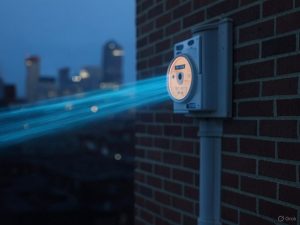The Hidden Risks of 5G and Cell Towers: Liability Concerns Highlighted by Environmental Health Trust

In an era where wireless technology is advancing at breakneck speed, the rollout of 5G networks and the proliferation of cell towers have sparked both excitement and unease. While the promise of faster connectivity and smarter cities drives this technological leap, a growing body of evidence suggests potential health risks that are being overlooked by industry and regulators alike. The Environmental Health Trust (EHT), a nonprofit dedicated to educating the public about environmental health hazards, has raised significant concerns about the liability and risks associated with 5G and cell tower radiation. Their webpage, “Liability and Risk from 5G and Cell Towers,” presents a compelling case that challenges the narrative of safety propagated by wireless companies and calls for greater scrutiny.
Wireless Companies’ Double Standard: Warnings for Shareholders, Silence for Consumers
One of the most striking revelations on the EHT webpage is the disparity in how wireless companies address the risks of radiofrequency radiation (RFR). These companies, including major players in the telecommunications industry, routinely warn their shareholders about potential financial liabilities stemming from health-related lawsuits tied to cell phone and cell tower radiation. Yet, this same caution is conspicuously absent in their communications with consumers or residents living near cell towers. The EHT points out that while companies acknowledge the uncertainty surrounding RFR’s biological effects in their legal disclaimers, they do not extend this transparency to the public, leaving communities in the dark about possible health implications.
This selective disclosure raises ethical questions about accountability. If the risks are significant enough to warrant warnings to investors, why are the millions of people exposed to cell tower emissions daily not afforded the same awareness? The EHT argues that this omission could pave the way for future litigation, as evidence of harm continues to mount.
Insurers Sound the Alarm: 5G as a “High Risk”
The insurance industry’s stance on 5G and electromagnetic radiation provides another layer of concern. According to the EHT, insurers classify 5G and RFR as a “high” risk, drawing parallels to historical liabilities like lead and asbestos—substances once deemed safe but later linked to severe health consequences. A 2019 report by the Swiss Re Institute, a leading global provider of insurance, labels 5G mobile networks as an “off-the-leash” risk, suggesting that the potential for liability claims could emerge years down the line due to the long latency of health effects. The report notes that while the biological impacts of electromagnetic fields (EMF) and 5G remain under debate, the uncertainty alone justifies caution.
This classification is not merely theoretical. Most insurance plans include “electromagnetic field exclusions,” refusing to cover long-term damages from RFR exposure. The EHT highlights that U.S. mobile operators struggle to secure insurance for such liabilities, underscoring the financial and legal precariousness of unchecked 5G deployment. If insurers are unwilling to bet on the safety of this technology, it begs the question: should the public be expected to bear the risk?
Scientific Evidence: A Growing Case for Concern
The EHT webpage compiles a wealth of scientific studies that challenge the assumption that cell tower radiation is harmless. For instance, a 2015 study published in the International Journal of Environmental Research and Public Health found that elementary students exposed to higher levels of RFR from mobile phone base stations exhibited elevated risks of Type 2 diabetes. Another study, conducted in 2011, documented a dramatic increase in cancer incidence among populations living near a powerful cell tower after just one year of operation. More recently, a 2021 study linked higher RFR exposures from cell towers to increased mortality rates for various cancers, including breast, lung, and esophagus cancers.
Animal studies further bolster these findings. A large-scale experiment published in Environmental Research exposed rats to cell tower-level RF radiation and observed increased incidences of cancers—results consistent with those from the National Toxicology Program. Additionally, a German study noted significant spikes in stress hormones like adrenaline and noradrenaline in residents within six months of a cell tower’s activation, with subsequent declines in dopamine levels after 18 months, hinting at neurological impacts.
An analysis cited by the EHT found that approximately 80% of studies on populations near cell towers reported biological effects, including genetic damage, reproductive issues, and heightened cancer risk, even at radiation levels well below current regulatory limits. These effects were observed within 200 to 500 feet of towers—distances that encompass many residential areas.
The Liability Dilemma: Protecting Companies or the Public?
The mounting scientific evidence has prompted calls for proactive measures to mitigate liability. A 2020 study referenced on the webpage recommends that wireless companies voluntarily restrict cell tower placement within 500 meters of schools and hospitals. The authors argue that while direct causation between RFR and health effects remains debated, the existing data warrants precaution to shield companies from future lawsuits—lawsuits that could mirror the tobacco industry’s reckoning with long-term health consequences.
Yet, the EHT emphasizes that the focus should not solely be on protecting corporations. Schools, homes, and public spaces are increasingly surrounded by cell towers and small cell installations, exposing vulnerable populations—particularly children—to continuous radiation. The lack of long-term safety data for 5G, which utilizes higher frequencies than previous generations, amplifies these concerns. Wi-Fi in classrooms and cell towers on school property, the EHT warns, present “serious liability issues” that could haunt educational institutions and governments if health impacts materialize.
A Call for Accountability and Precaution
The EHT’s webpage is more than a compilation of studies—it’s a clarion call for accountability. It underscores the disconnect between the rapid deployment of 5G infrastructure and the lagging research on its safety. While wireless companies push forward, regulators like the Federal Communications Commission (FCC) rely on outdated guidelines, last updated in 1996, that fail to account for the cumulative effects of modern RFR exposure or the unique properties of 5G frequencies.
The implications are profound. If the risks outlined by the EHT materialize, the liability could extend beyond corporations to governments and local authorities that approved these installations without rigorous independent health assessments. The webpage serves as a resource for communities, urging them to demand transparency, push for updated safety standards, and reconsider the unchecked proliferation of cell towers in residential areas.
Conclusion: A Risk Too Great to Ignore?
As 5G continues to reshape our technological landscape, the EHT’s “Liability and Risk from 5G and Cell Towers” webpage stands as a sobering reminder of the uncertainties we face. The juxtaposition of industry warnings to shareholders, insurer hesitancy, and a growing body of scientific evidence paints a picture of a technology racing ahead of its safety assurances. Whether these concerns will culminate in a public health crisis remains to be seen, but the EHT argues that the stakes are too high to gamble on inaction. For now, the question lingers: who will bear the cost if the risks prove real—the companies profiting from 5G, or the public left exposed?





